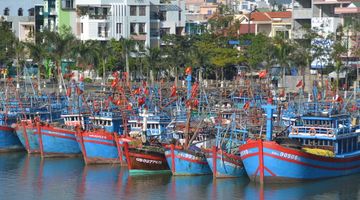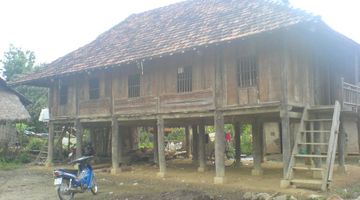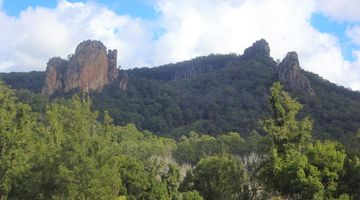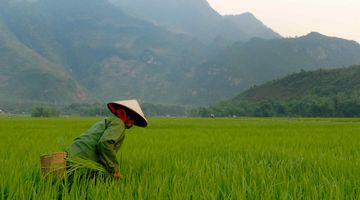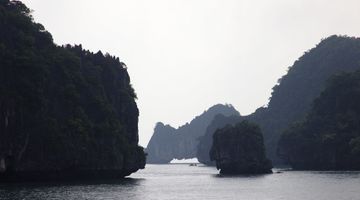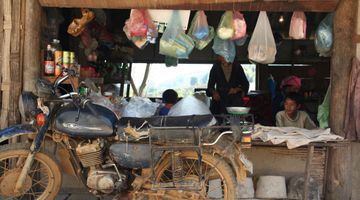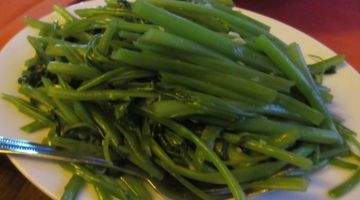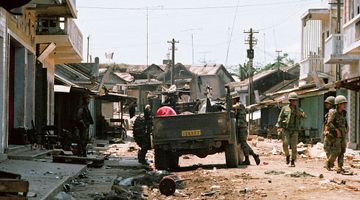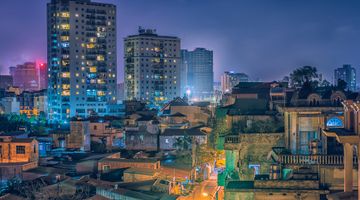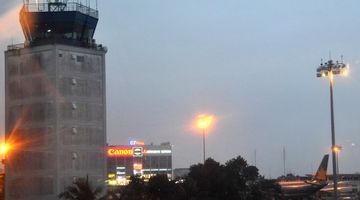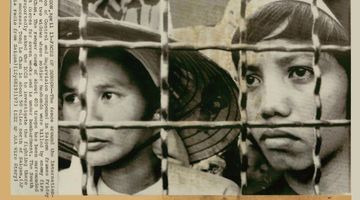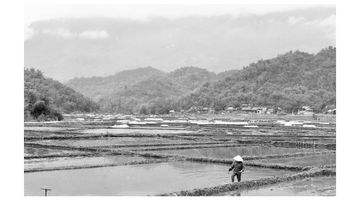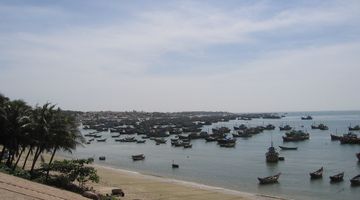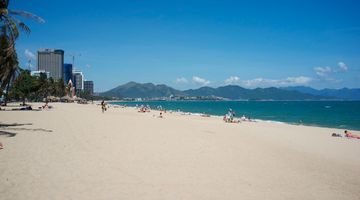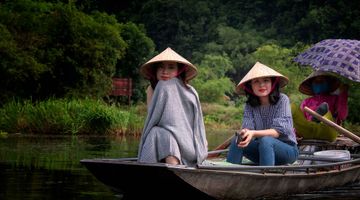15 Interesting, Unusual and Fun Facts About Vietnam
Vietnam is slowly becoming a hot travel destination. Although it may not be considered one of the “must see” countries by some, Vietnam still has a lot to offer travellers. With unspoiled islands, beautiful beaches, delicious food, fascinating culture and amazing history, this incredible country is waiting for you to explore. If it does not sound enough to convince you to come, here are 15 interesting facts about Vietnam to surprise you.
Fact 1: Snow in a tropical country
The climate in Vietnam is greatly impacted by the monsoon, which is characterized by many sunny days, rainfall and high humidity. Temperature ranges between 17-29 degrees Celsius all year round. However, you still can catch up snow at the right time at the right place. Sa Pa is a charming, mountainous town in the North of Vietnam along the border with China. Between Decembers and February, the temperature can drop below 0 there. Although snowboarding and sledding are not common in Vietnam, you can still have fun in Sa Pa with other winter activities such as making a snowman, snowball fighting or simply watching the snowfall.
Fact 2: Largest cave in the world
Located in Phong Nha-Ke Bang National Park, Quang Binh Province of Vietnam, a newly -discovered cave system approximately 5.5 miles long, 650ft wide, and 500ft tall offers spectacular and enormous opportunities for cave explorers. The cave system is made up of more than 150 individual caves and has many awe-inspiring subterranean features such as a giant stalagmite, fields of pre-historic algae and cave pearls. It is debatable whether this is truly the world’s largest cave but it is definitely worth exploring.
Fact 3: Facts about the Vietnamese language
The Vietnamese literature and language are strongly influenced by China due to more than 1000 years of colonization. The Vietnamese written language originally made use of Chinese characters until the 13th century when Vietnam developed its own script called chu nom, with the later adoption of Latin alphabet with diacritics in the 17th century. Spoken Vietnamese is tonal. Though the grammar of the Vietnamese language is relatively simple, 6 tones are quite challenging for learners. A small change in tone changes the meaning of the word. See example below:
Level tone - not emphasized anywhere: ma = ghost
Hanging tone - a grave accent over a vowel: mà = but
Sharp tone - an acute accent over a vowel: má = mom
Asking tone - a hook-like symbol over a vowel: mả = grave
Tumbling tone - a tilde over a vowel: mã = horse
Heavy tone - a point below a vowel: mạ = baby rice plant
Fact 4: Teachers are highly respected
In some Western countries, the teaching career has received less attention and become undervalued, so it’s cool to see teachers get respect in Vietnam. There is even a national day to honour teachers, that is Vietnamese Teacher Day which is held on the 20th of November annually. On this special day, students express gratitude and respect to their teachers. This special day is usually celebrated at schools with fun activities such as singing, dancing, recitals, sports, and exhibitions. Alumni often bring some flowers and gifts and visit their teachers at their homes.
Fact 5: Ho Chi Minh's embalmed body on display
Ho Chi Minh, the first president of Vietnam, also known as Uncle Ho, died in 1969, and his body is now displayed in a mausoleum located in Ha Noi capital. For many Vietnamese, this place is a destination of religious pilgrimage. If you want to see Ho Chi Minh’s corpse but feel reluctant due to long queue lines, think again! Actually, the lines move really fast. Visitors are not allowed to pause to take a picture. You are expected to move along while watching. The mausoleum is typically closed from September to December as it is said that the body is brought to Russia annually for maintenance.
Fact 6: Incredible diversity of Vietnamese ethnic groups
Vietnam is a multiethnic country with 54 ethnic groups recognized by the government. Each ethnic group has its own language and culture. The Vietnamese (Kinh) people account for roughly 86% of the country's population and mainly reside in deltas and coastal provinces. The remaining 14%, about 8.5 million people, are scattered over the mountainous and highland areas ranging from the North to the South. Minority groups have limited access to infrastructure, health service, and educational facilities. Ethnic minorities depend heavily on agriculture and have a small contribution to national economies as a whole.
Fact 7: Lotus is national flower of Vietnam and its fascinating meanings
Lotus was voted to become national flower of Vietnam in 2010. The chosen flower is widely grown in the country. Lotus is an aquatic plant, growing in muddy ponds. Leaves are waterproof and floating. Flowers rise above the water surface to get sunshine, bloom with remarkable beauty and emit a pleasant scent. Lotus is a symbol of the pure beauty that is not spoiled by the mud, and the strong spirit of Vietnamese who are going through all adversities to show their best traits to the outside world, regardless of harsh circumstances.
Fact 8: Interesting unknown facts about coffee
If you are a coffee lover, you may be surprised to discover that Vietnam is the second largest coffee exporter in the world today, after Brazil. Coffee was first introduced to Vietnam by the French and planted in highland areas in the 1800s with annual production capacity reaching at that time only about 80 tones. Coffer production has continued to increase after the Vietnam War. In recent years, Vietnam has produced more than 1 million tonnes per year.
Weasel coffee, also known as Kopi Luwak or civet coffee in Indonesia and Philippines, is the most expensive coffee in Vietnam. The price for this specialty coffee is about USD150/kg and it is one of top 10 most expensive coffees in the world. What makes weasel coffee valuable and costly is the process of digestion. No mistake, you read correctly. That is digestion. Weasels consume the coffee fruit. Perfectly protected by a thin silk membrane, coffee beans survive through the digestion system of the animals and then are collected from the animal’s faeces. These coffee beans become extremely aromatic with vanilla smelling & sweet taste.
Although the French introduced coffee to Vietnam, the Vietnamese have altered this black beverage into their own style, with slightly unusual yet delicious. Ground coffee is inserted into a metal drip filter which is placed on the top of a cup. Hot water is then added and hot coffee drops drip slowly into the cup. Entertainingly, most of Vietnamese like drinking black coffee with ice and maybe with condensed milk.
Fact 9: Vietnam street foods are defined in Oxford Dictionary
Vietnamese cuisine is characterized by endless variety and extraordinary flavours. Banh mi and pho are two Vietnamese words that go directly into Oxford Dictionary instead of being translated into English. The former is the signature sandwich that is getting more and more popular with people around the world. Generally speaking, it is a loaf of bread with the filling of the three main components: meat (roasted pork, barbecue or grilled pork), vegetables (cucumber slices, pickled carrot, and cilantro) and sauce (chili, tomato or soy sauce). The latter is rice noodles soup served with a variety of raw or cooked beef, beef tendon or beef meatball, bean sprout and herbs. Pho is eaten at any time of the day but especially for breakfast.
Fact 10: Unknown facts about vegetarianism in Vietnam
There are two main approaches for Buddhists in Vietnam to practice vegetarianism. The first approach is the lifetime abstinence from animal foods. This approach is commonly practised by Buddhist monks and nuns. The second approach is part-time vegetarianism. Those following this approach tend to eliminate animal product from their diet only on the 14th &15th and the 1st & 2nd of each lunar months.
The reasons that most Vietnamese choosing vegetarian diets are totally different from the western approach. In the West, people reduce consumption of animal products because of health benefits, environmental factors or love for animals. None of these reasons is the primary motivation for the Vietnamese. In Vietnam, vegetarianism is habitually practiced to support prayers and wishes. For example, if someone has an important surgery coming up, a sincere prayer to Buddha followed by a week of vegetarianism is often carried out. Some say it is a sacrifice to express appreciation for Buddha’s assistance, while the critic thinks this is like a bargain with heavenly power.
Fact 11: Bamboo stick – an interesting cultural feature on floating markets in Vietnam
When visiting floating markets in Vietnam, tourists will have a chance to see bamboo sticks used for displaying local products on sale. Products which are hung for sale on these sticks are mainly vegetables and fruits. You will see boats fully loaded with pineapples, mangoes, mangosteens, durians, bananas, longans, watermelons, jackfruits, etc. You can also see yams, taro, carrots, sweet potatoes, tomatoes, cabbage, sugar cane and even flowers. It is colourful and amazing. Though there are also different beverages for sale like coffee, tea, and coconut juice, they are never put on the sticks: too heavy!
But sometimes you will see bamboo sticks with coconut leaves attached – well, you probably never guess what it means. In Vietnam the coconut leaf represents a roof of a house and when you see it attached to a bamboo stick it means the boat where this stick is placed is for sale.
Finally, sometimes you will see bamboo sticks covered with clothes – no, they are not for sale. They just mean that the boat owners probably don’t have room to dry their clothes anywhere else, that’s it.
Fact 12: Fun fact about motorbikes
On your first arrival in mega cities like Hanoi or Ho Chi Minh, the first amazing fact you’ll most likely notice is that motorbikes are everywhere. We really mean it. While the population of Vietnam is about 92 million people, it is estimated that there were about 45 million registered motorbikes in 2016. This means there is a motorbike for every other person. Vietnam remains one of the world’s largest motorbike markets. On the other hand, roughly 2 million cars are used in the country. The car is considered a luxury property of wealthy people because car tax in Vietnam is about 200-300%.
Fact 13: Surprising fact about Vietnam – it is among the top 5 happiest countries in the world
Vietnam is often described as a happy and optimistic nation. The UK-based Happy Planet Index reported that Vietnam is ranked 5th happiest nation in the world and second – in the Asia Pacific region in 2016. You’ll see no lack of smiles on Vietnamese faces when you come to Vietnam. Vietnamese are even more optimistic about the economic trend, holding second place according to the survey reported by Gallup International Association.
Fact 14: Free Wifi
WiFi networks are reliable and can be easily found pretty much everywhere in major cities. You can get free access to the Internet in most coffee shops, hotels, fast food franchises, even in the main walking streets. If the Wifi is secured by passwords, don’t hesitate to ask staff for it. No surcharge is applied.
Fact 15: Fun fact about legal drinking age in Vietnam
Drinking ages are different all over the world. It is 21 in America, 19 in Canada, 16 in some countries in Europe. Surprisingly, there is no legal drinking age in Vietnam. You can drink it as long as you can get the alcohol. That is the fact, no joking. No ID check is required to purchase liquor at any age. That may be the reason contributing to the fact that Vietnam is the third-largest beer consumer in Asia, behind only Japan and China, consuming about three billion litres annually.


